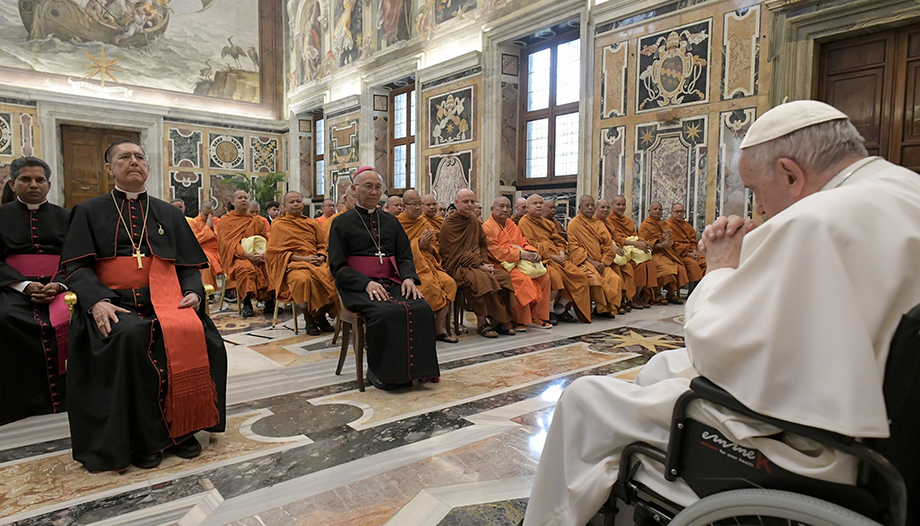Interreligious dialogue is a tool for diplomacy and peace building. On Thursday, June 15, a round table organized by the Institute for International Policy Studies (ISPI) on this topic was held at the Italian Parliament.
The initiative was attended by Paul Richard GallagherThe Archbishop said: "When we speak of religion and peace, the first thing that comes to mind is prayer," he said. "When one speaks of religion and peace, the first thing that comes to mind is prayer," the Archbishop began, because it is "a privileged way through which only those who have faith can express their desire for peace."
A desire "based on four ethical guidelines, typical of the great religious traditions: respect for life, dialogue, honesty, mutual respect". Only in this way can interreligious dialogue work, "fundamental for building peace among nations, given that about 85% of the world's population identifies with a religion" and to "prevent fundamentalism from gaining the upper hand and religious persecution from multiplying".
What is the way forward in the midst of so many conflicts that stain the world with blood, the Christian community being the most persecuted? "It is necessary to activate measures that allow the parties to enter into a state of peace and justice, not of aggression and death," Gallagher explained, "peace must no longer be seen as the absence of war imposed by force, but as an act of justice inscribed in reality."
Decisive then is 'fraternity, considered by Pope Francis as the foundation and path to peace. Just as it guides individuals, it must guide the family of nations, together with nonviolence and charity.
To promote human contact, not to relegate religion to the individual sphere in order to promote the public dimension of faith. In this context, a delegation of about 80 monks began a two-day visit to Rome on June 15. At the Augustinianum, they met with representatives of the Dicastery for Interreligious Dialogue, directed by the Cardinal Ayuso.
The delegation was scheduled to meet Pope Francis, but due to the Pontiff's convalescence, they wrote him a letter, signed by the Venerable Somdet Phra Mahathirachan, abbot of the Royal Temple of Wat Phra Cetuphon.
The Thai delegation consisted of members of the Supreme Sangha Council of Thailand, the Wat Phra Chetuphon Sangha Assembly, the Regulatory Office of the Bhikkhus Dhammaduta Overseas and the staff of the King Prajadhipok Institute.
The letter to the Pope, written in Italian on behalf of all the members of the delegation, the Archbishop of Chiang Mai, Francesco Saverio Vira Arpondratana, and the Thai embassies in Italy and at the Holy See, opened by assuring Pope Francis that he was deeply present in their prayers, especially as he continues to recover from abdominal surgery at Gemelli Hospital, from where he was discharged on June 16.
The Buddhist monks then prayed for peace and visited the tomb of the late Pope Benedict XVI, gathering around it and remaining for a few moments in silence.
In his greeting to the delegation, Cardinal Ayuso recalled that, "as friends", we share "the same joys, the same sorrows, the same concerns and visions". The two delegations, Catholic and Buddhist, represent a pilgrimage of friends, the cardinal continued, of which Pope Francis is a witness.








